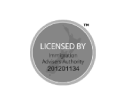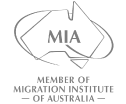For skilled professionals migrating through Australia’s skilled migration program, the citizenship test represents the final threshold in transitioning from permanent residency to full civic integration. This high-stakes assessment evaluates not only factual knowledge of Australia’s institutions but also a demonstrated commitment to national values that underpin its multicultural society. With a 75% pass rate requirement and absolute demands on Australian values comprehension, the test demands targeted preparation aligned with Australia’s evolving citizenship framework.
Structural Foundations of the Citizenship Test
Historical Evolution and Legislative Framework
Introduced in 2007, the citizenship test emerged as a quality-control mechanism amid growing migration flows, initially requiring 60% correctness across 20 questions[1]. Post-2009 reforms elevated the passing threshold to 75% while mandating perfect scores on five Australian values questions—a recalibration emphasizing cultural assimilation over rote memorization[1]. The test’s legal basis stems from the Australian Citizenship Act 2007, which ties conferral to adequate English proficiency and civic knowledge[4].
Core Test Components and Scoring Dynamics
Administered via computer at Department of Home Affairs offices, the 45-minute exam features:
- 20 multiple-choice questions drawn from four domains: Australia’s people, democratic beliefs, government structure, and national values[4]
- Five mandatory values questions requiring 100% accuracy on themes like freedom of speech, secular governance, and gender equality[1]
- Automated difficulty adjustment where incorrect answers trigger harder subsequent questions
Skilled migrants often stumble on nuanced distinctions, such as differentiating between the Governor-General’s legislative role (granting Royal Assent[1]) versus ceremonial duties. Common pitfalls include conflating state/federal responsibilities and misinterpreting “mateship” as casual friendship rather than a cultural ethos of solidarity[5].
Strategic Preparation Frameworks
Mastery of Official Resources
The Department of Home Affairs mandates study of Australian Citizenship: Our Common Bond—a 40-page booklet covering testable content through four sections[4]. Effective strategies involve:
- Thematic chunking: Grouping related concepts (e.g., parliamentary vs. constitutional monarchy)
- Values internalization: Role-playing scenarios to apply principles like religious tolerance
- Timed simulations: Using platforms like OzCitizenshipTest to build exam stamina[3]
Regional councils augment federal materials with localized resources, such as Greater Bendigo’s workbook integrating settlement services with test prep[8].
Contextual Learning for Skilled Migrants
Professionals on visas like Subclass 189 benefit from correlating test content with lived experiences:
- Demographic data: Recognizing that 28.6% of Australians were born overseas reinforces multiculturalism principles
- Workplace rights: Linking jury service obligations[1] to civic participation parallels professional responsibilities
- Economic policy: Understanding GST allocation explains state/federal funding debates
Embedded learning techniques—such as discussing Australia’s wartime history during ANZAC Day observances—prove more effective than flashcards for values retention[2].
Application Lifecycle Management
Eligibility Synchronization
Skilled migrants must align test










